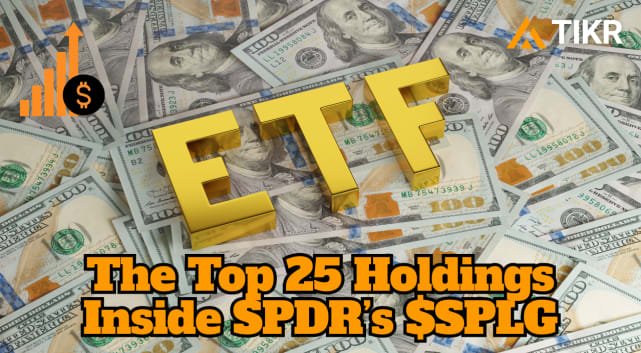Nike, Inc. (NYSE: NKE) designs, markets, and sells athletic footwear, apparel, equipment, and accessories worldwide. The company has long stood as the world’s dominant sportswear brand, recently trading around $78 per share with a market cap near $112.5 billion. Once a niche running shoe company, Nike has evolved into a global cultural icon and a cornerstone of the athletic apparel industry. Its iconic Swoosh, global marketing reach, and innovation pipeline in footwear and performance gear have made it one of the most recognized and widely owned consumer companies on Earth.
After decades of steady growth, Nike now faces near-term headwinds, with softer demand in North America and China weighing on results and pushing the stock down about 9% over the past year. Still, its pricing power, resilient margins, and unmatched brand strength keep it firmly positioned as a long-term leader. Nike’s shareholder base reflects this dual reality: stable ownership from the largest index funds and retirement systems, alongside more active managers and hedge funds who are constantly weighing its near-term trajectory.
Once closely tied to founder Phil Knight’s stake, Nike has gradually transitioned into a widely held global institution, with ownership spread across the biggest asset managers and sovereign wealth funds.
Looking at Nike’s ownership and insider trades gives us a sense of how major investors are positioning around the stock today.
Track the top shareholders of over 50,000 global stocks (It’s free) >>>
Who Are Nike’s Top Shareholders?

See whether Nike’s top shareholders are buying or selling today >>>
Nike designs and sells athletic footwear, apparel, equipment, and accessories worldwide. Its ownership is led by passive giants, while active managers are sending different signals.
- Vanguard Group: 113.3M shares (9.5%), ~$8.6B. Added 659K shares (+0.6%).
- BlackRock: 64.2M shares (5.4%), ~$4.9B. Cut 2.5M shares (-3.8%).
- Wellington Management: 32.3M shares (2.7%), ~$2.5B. Reduced 13.1M shares (-28.8%).
- Fidelity Management: 23.0M shares (1.9%), ~$1.8B. Added 9.8M shares (+74%).
- BofA Global Research: 12.5M shares (1.1%), ~$952M. Added 3.8M shares (+44%).
- Norges Bank: 11.8M shares (1.0%), ~$896M. Cut 3.1M shares (-21%).
- Goldman Sachs: 10.7M shares (0.9%), ~$815M. Cut 7.0M shares (-39.6%).
One highlight from last quarter is D.E. Shaw’s aggressive move, lifting its Nike position by more than 2,000%. The fund now holds about 355,000 shares worth $25 million, which looks like a strong conviction bet after a period of muted performance.
Another standout move came from Two Sigma Advisers, which boosted its Nike stake by over 8,000%. The firm now controls about 5.4 million shares worth $384 million, showing that quant-driven strategies have turned sharply bullish on the stock.
Citadel Advisors also raised its position by nearly 644%, now holding about 324,000 shares valued at $23 million, signaling renewed optimism from one of the world’s largest hedge funds.
Vanguard and BlackRock provide stability through index ownership. The sharp buying from Fidelity, BofA, Two Sigma, and Citadel suggests rising confidence in Nike’s recovery, while the large cuts from Wellington and Goldman show caution. Overall, investors appear split on how quickly Nike can bounce back from its slowdown.
What Nike’s Insiders Are Doing with Their Stock

Insider trading activity provides a window into how company leaders view their own stock. While these moves do not always reflect business fundamentals, they can hint at whether executives see value at current prices or prefer to reduce exposure. In Nike’s case, recent activity has leaned heavily toward selling.
Here are some recent insider sales:
- Mark Parker (Chairman & Director): 86,078 shares at ~$76 and 110,000 shares at ~$72.
- Philip McCartney (Officer): ~3,162 shares at ~$77.
- Robert Leinwand (Officer): 1,644 shares at ~$75.
- Craig Alan Williams (Officer): 2,813 shares at ~$75 and 4,689 shares at ~$74.
- Matthew Friend (CFO): 2,688 shares at ~$75.
- Amy Montagne (Officer): 993 shares at ~$75.
The steady stream of sales suggests leadership may be trimming personal stakes or managing exposure rather than actively adding.
While many of these trades could be scheduled or linked to diversification, the lack of insider buying makes it look like management is cautious about committing more at recent share prices.
See recent insider trade data for over 50,000 global stocks (It’s free) >>>
What the Ownership & Insider Trade Data Tell Us
Nike’s ownership structure shows a balance between long-term stability and short-term debate. Passive giants like Vanguard and BlackRock keep the stock anchored in index funds, ensuring a steady base of demand. At the same time, the sharp increases from Fidelity and BofA alongside heavy cuts from Wellington and Goldman highlight just how split institutional investors appear to be on Nike’s near-term performance.
Insider activity adds another layer. With most executives selling and no meaningful buying reported, it looks like management is cautious about increasing exposure at today’s levels. While many of these sales may be pre-planned or diversification-driven, the absence of insider confidence leaves investors without a clear bullish signal.
Nike remains a global brand with unmatched scale and long-term pricing power, but the mix of divided institutional moves and insider selling suggests that big players are hesitant to call a bottom.
Investors may want to watch for improving demand trends or insider conviction before expecting stronger momentum in the stock.
Wall Street Analysts Are Bullish on These 5 Undervalued Compounders With Market-Beating Potential
TIKR just released a new free report on 5 compounders that appear undervalued, have beaten the market in the past, and could continue to outperform on a 1-5 year timeline based on analysts’ estimates.
Inside, you’ll get a breakdown of 5 high-quality businesses with:
- Strong revenue growth and durable competitive advantages
- Attractive valuations based on forward earnings and expected earnings growth
- Long-term upside potential backed by analyst forecasts and TIKR’s valuation models
These are the kinds of stocks that can deliver massive long-term returns, especially if you catch them while they’re still trading at a discount.
Whether you’re a long-term investor or just looking for great businesses trading below fair value, this report will help you zero in on high-upside opportunities.
Click here to sign up for TIKR and get our full report on 5 undervalued compounders completely free.





